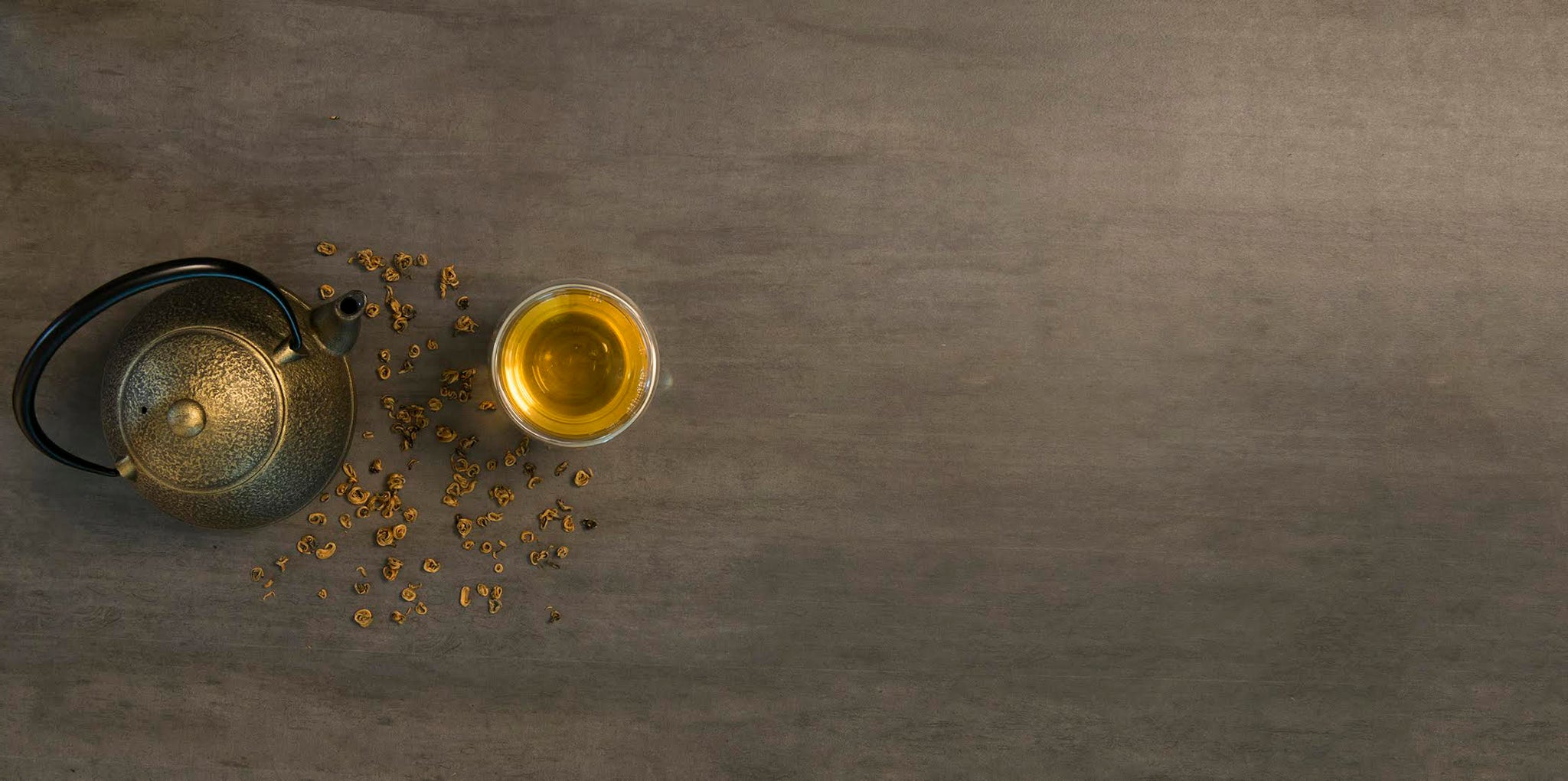How to properly taste tea: a 5-step guide
How many cups of tea have you tasted?
Thousands, I bet. Me too. And for years, I didn’t realise that I was missing out on a whole world of incredible flavours, despite drinking good quality tea.
The reason for this is simple. It’s not just what you taste, but how you taste it. Just like drinking a glass of wine, taking time to properly taste a cup of tea can transform the flavours that dance over your tongue.
When you learn how to properly taste tea, you’ll discover and unravel all the different flavours, like opening a box of chocolates. You’ll taste the big flavours, you’ll feel delicate subtle flavours slowly unravel, and you’ll discover different tastes again as they leave your mouth. You’ll learn to be mindful of each and every flavour – be it nutty or fruity, sweet or even chocolatey – and in doing so, draw more enjoyment from each cup of tea you drink.
Sound delicious? Here is my 5-step guide to properly tasting tea:
1. Brew.
The perfect taste starts with the perfect brew. Use a tea pot or tea glass with a removable infuser net so you can manage how long your precious leaves are steeped for, ensuring the leaves don’t turn bitter. Use freshly drawn water heated to the correct temperate for the type of tea you are about to drink. A temperature-variable kettle is ideal for this*. Then, add the right amount of leaves for your size of vessel/volume of water (around one heaped teaspoon per 130-150ml, a standard teacup size, is a good rule of thumb) and steep for the required time.
2. Smell.
Smelling the dried leaves first is a lovely way to start to understand what flavours and aromas you will find in your cup. Take your tea canister or foil pack in your hands, shake it and open it up. This creates a funnel for the scent to travel up and into your nose. Then, close your eyes to focus your sense of smell. Breathe in the scent of the dried leaves.
3. Pour.
If I am using a teapot or gaiwan (a traditional Chinese brewing vessel), I often pour a few centimetres in to my cup first, then swish it around as if I was tasting wine (being careful not to spill it – it’s hot!). Then I stop once more to smell the aromas that emanate from it, before filling up my cup. Once the cup is full, I take a succession of quick breaths in and out from my nose (yogis might think this to be a little like pranayama) to get the full scent of the tea. You can also smell the wet leaves that remain in the pot as these often give out notes that are slightly different to the dry leaves or liquor (poured tea).
4. Taste.
When you take a sip of your tea, breathe in at the same time, then breathe out through your nose while holding the liquor in your mouth. While the taste buds on your tongue allow you to taste the flavour of the liquor, breathing out will draw the scent of the liquor into your throat and up into your nasal passages to your olfactory gland (where information about aroma is processed). This gives you a much better appreciation for the full flavour profile of the tea.
5. Sense.
Now is the time to really think about all the different flavours you experience. The brief, fleeting flavours you immediately perceive when you taste the tea are called ‘head notes’. These often disappear quickly. When you have the liquor held in your month, this is when you will taste the ‘body notes’. And finally, after you have swallowed the liquor you will often notice a subtly different aftertaste in your mouth. These are called the ‘tail notes’.
While I write this blog, I’m drinking a Himalayan black tea. I can detect a very subtle biscuity head note, a rich floral body, then grassy and citrus tail notes. Delicious. But don’t worry if you can’t make out or describe the head, body and tail notes straight away. It can take many hours – if not days, months and years of practice! For me, it wasn’t easy at first to properly determine and describe all the different flavours, and I still work on it almost every day.
Tea – and flavour – is so personal to each individual, so find the way to taste it that works best for you. Also remember that tea is to be enjoyed – so don’t worry about being an expert. The mindfulness that comes from simply being aware will be as nourishing as the tea you pour.
> Subscribe now and enjoy the sensory experience of specialty tea
*If you don’t have a temperature-variable kettle, open the kettle lid and let the boiled water cool for 1.5 minutes for fermented tea, 2 minutes for dark oolong and 2.5 minutes for white, green and light oolong.



Jun 30, 2020 • Posted by The Tea Curator
What an incredible start to your life @Tanchho Hang Limbu! Once you get into it, tea is such a fascinating subject that you never really get tired learning about. Good luck!
Feb 05, 2019 • Posted by Tanchho Hang Limbu
Having been born and brought up in a place which grows world class teas, Darjeeling, I have been unaware up until recently about the magical world of flavors of tea, so I have set out on a journey of tea tasting and thank you all for the great valuable content you all provide at The Tea Curator.